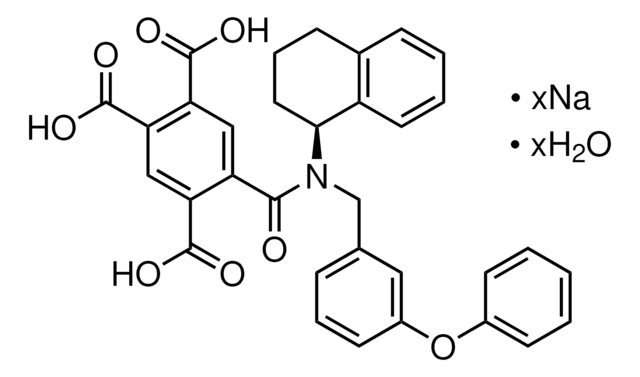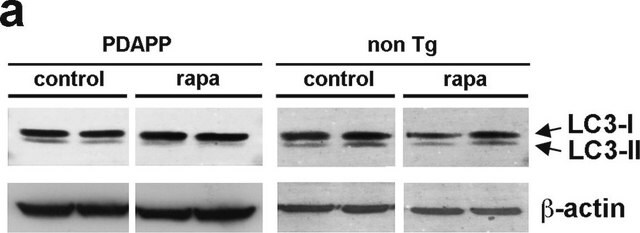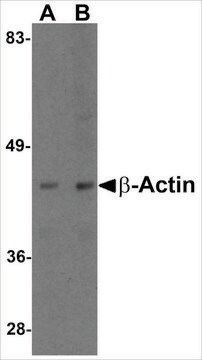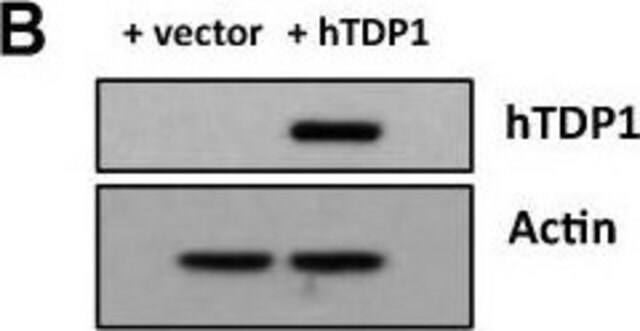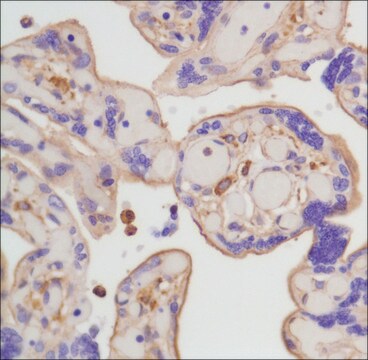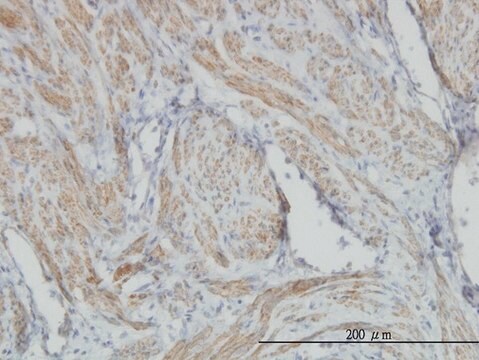A3854
Anti-β-actina monoclonal
clone AC-15, purified from hybridoma cell culture
Sinónimos:
Monoclonal Anti-β-Actin, Loading Control
About This Item
Productos recomendados
origen biológico
mouse
Nivel de calidad
conjugado
peroxidase conjugate
forma del anticuerpo
purified immunoglobulin
tipo de anticuerpo
primary antibodies
clon
AC-15, monoclonal
formulario
buffered aqueous solution
mol peso
antigen 42 kDa
reactividad de especies
sheep, carp, feline, chicken, rat, mouse, Hirudo medicinalis, rabbit, canine, pig, human, bovine, guinea pig
no debe reaccionar con
Dictyostelium discoideum
Drosophila
técnicas
western blot: 1:25,000-1:50,000 using cell extracts of human foreskin fibroblasts or chicken fibroblasts
isotipo
IgG1
Nº de acceso UniProt
aplicaciones
research pathology
Condiciones de envío
dry ice
temp. de almacenamiento
−20°C
modificación del objetivo postraduccional
unmodified
Información sobre el gen
human ... ACTB(60)
mouse ... Actb(11461)
rat ... Actb(81822)
¿Está buscando productos similares? Visita Guía de comparación de productos
Descripción general
Mouse monoclonal anti-β-actin-peroxidase antibody specifically localizes β-actin in a wide variety of tissues and species using immunoblotting (42kDa). The antibody cross-reacts with β-Actin expressed in cells of human, bovine, sheep, pig, rabbit, cat, dog, mouse, rat, guinea pig, chicken, carp, and Hirudo medicinalis (leech) tissues, but not in Dictyostelium discoideum amoebae or Drosophila.
Inmunógeno
Aplicación
Acciones bioquímicas o fisiológicas
Forma física
Almacenamiento y estabilidad
Otras notas
Cláusula de descargo de responsabilidad
¿No encuentra el producto adecuado?
Pruebe nuestro Herramienta de selección de productos.
Palabra de señalización
Warning
Frases de peligro
Consejos de prudencia
Clasificaciones de peligro
Skin Sens. 1
Código de clase de almacenamiento
12 - Non Combustible Liquids
Clase de riesgo para el agua (WGK)
WGK 2
Punto de inflamabilidad (°F)
Not applicable
Punto de inflamabilidad (°C)
Not applicable
Equipo de protección personal
Eyeshields, Gloves
Certificados de análisis (COA)
Busque Certificados de análisis (COA) introduciendo el número de lote del producto. Los números de lote se encuentran en la etiqueta del producto después de las palabras «Lot» o «Batch»
¿Ya tiene este producto?
Encuentre la documentación para los productos que ha comprado recientemente en la Biblioteca de documentos.
Los clientes también vieron
Nuestro equipo de científicos tiene experiencia en todas las áreas de investigación: Ciencias de la vida, Ciencia de los materiales, Síntesis química, Cromatografía, Analítica y muchas otras.
Póngase en contacto con el Servicio técnico






